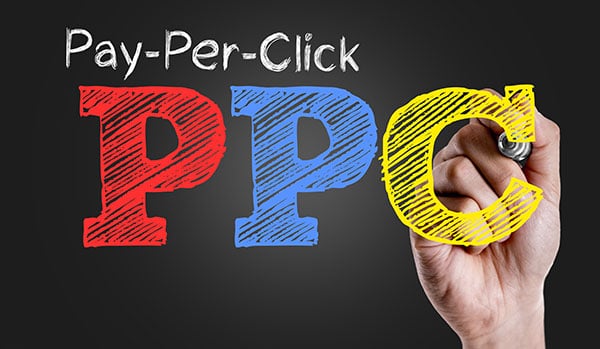If you’re in the digital marketing world, chances are you’ve heard the phrases “pay-per-click” or “cost-per-click” thrown around a few times. They’re one in the same, and they have the power to get your product in front of your audience — a lot.
In simple terms, pay-per-click (PPC) is an internet advertising model that’s used to drive traffic to websites where an audience can buy a product. The advertiser (you) pays the publisher (in this case, Google or Facebook) when the audience member clicks on the ad.

You’re scrolling through Facebook on a Saturday morning. You’ve been in the market for a new swimsuit. Through targeting tools, Facebook knows this. In between your Aunt Susan’s photo of her garden and Uncle Bill’s trip to Utah, you see a sponsored ad for a swimsuit. The polka-dot bikini is now 20% off. You click the ad. When you clicked the ad, the bikini company paid Facebook. Because you’re engaging with that ad, that company’s ad is working.
Make sense The company paid for your click. It was a pay-per-click ad. Now let’s get a little more granule. Since the above example was Facebook, we’ll start with Facebook…
Facebook is a pay-per-click marketing channel. This means you’ll pay Facebook every time someone clicks on your ads. You can also be charged for ad impressions, video views, and a long list of other metrics. Now that you know this, it’s important to establish a strategy that works for your business. The name of the game when it comes to establishing a strong advertising strategy on Facebook is trial and error. Facebook has a million ways to use their ad platform — and you need to narrow it down the best way. That may sound daunting, but it’s possible!
Here are a few quick strategies to get you started:
- Play around with ad placements: Do you want to display your ads on Instagram How about desktop Or maybe through Instagram stories The options are endless. Play around with this tool and preview your ad to see what looks the best. Keep in mind that what looks the best to you might not perform the best for your audience. Don’t have too much pride. Let your results drive your decisions.
- Set up some A/B testing: As we said, trial and error is the name of the game. Facebook makes this strategy super easy to execute through their A/B testing tool. You can launch several ads that all have slightly different strategies. By identifying the highest-performing ads, you can allocate more of your budget to those spends and less to the ones that aren’t performing.
- Experiment with Targeting: You have to understand who your audience is in order to have a successful Facebook ad campaign. Experiment with your audience. Identify their likes, dislikes, and spending behaviors. Then, target the heck out of them.
Pay-Per-Click on Google
Google employs a similar pay-per-click model like Facebook. With graphic display ads, YouTube video ads, text-based search ads, and mobile ads, they offer plenty of ways for you to reach potential customers. They’ll charge you when someone engages with your content (this could be watching your video, calling your business and/or visiting your website).
As for setting your budget and your ad creative, that’s all up to you. Some businesses will spend tens of thousands of dollars a month, while others will cap out at a few hundred. And, similar to Facebook, there are a million ways and a million strategies to use with Google when it comes to advertising. Our best piece of advice Go to the source and play around with its features. Go here and take a deep dive into Google’s ad features (formerly known as Google Adwords). Start with a small budget, see what works and repeat what brings you revenue.

